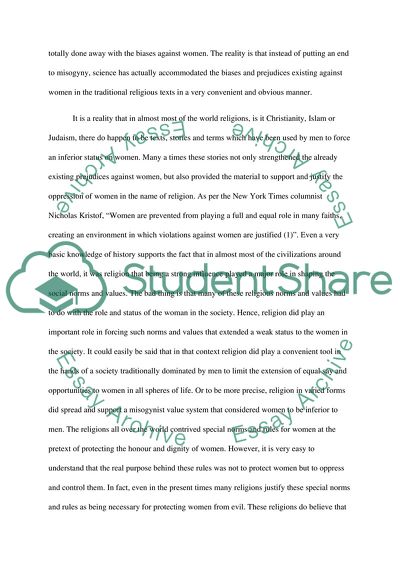Cite this document
(Did Science Put an End to Religious Misogyny Coursework Example | Topics and Well Written Essays - 2250 words, n.d.)
Did Science Put an End to Religious Misogyny Coursework Example | Topics and Well Written Essays - 2250 words. https://studentshare.org/sociology/1823229-does-religion-prevent-women-to-have-an-academic-career
Did Science Put an End to Religious Misogyny Coursework Example | Topics and Well Written Essays - 2250 words. https://studentshare.org/sociology/1823229-does-religion-prevent-women-to-have-an-academic-career
(Did Science Put an End to Religious Misogyny Coursework Example | Topics and Well Written Essays - 2250 Words)
Did Science Put an End to Religious Misogyny Coursework Example | Topics and Well Written Essays - 2250 Words. https://studentshare.org/sociology/1823229-does-religion-prevent-women-to-have-an-academic-career.
Did Science Put an End to Religious Misogyny Coursework Example | Topics and Well Written Essays - 2250 Words. https://studentshare.org/sociology/1823229-does-religion-prevent-women-to-have-an-academic-career.
“Did Science Put an End to Religious Misogyny Coursework Example | Topics and Well Written Essays - 2250 Words”. https://studentshare.org/sociology/1823229-does-religion-prevent-women-to-have-an-academic-career.


